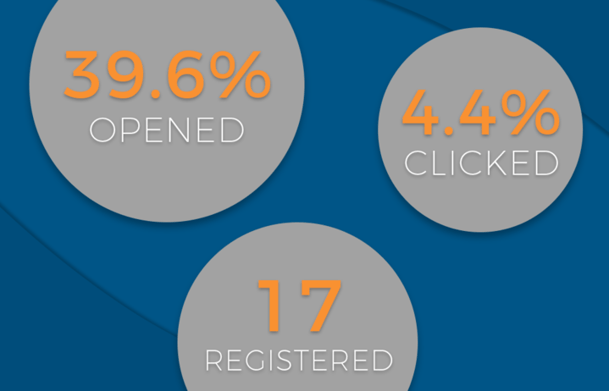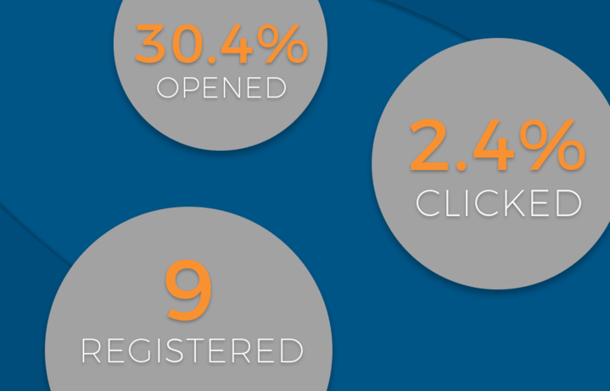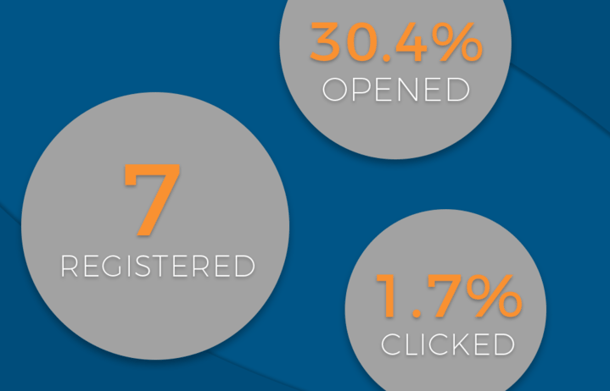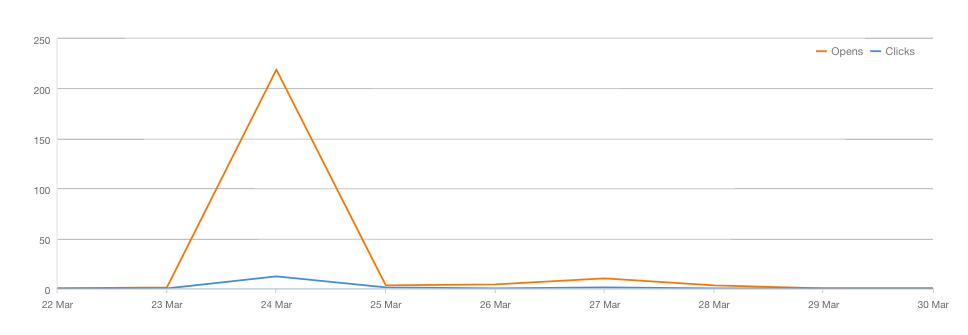Related Blog: How to Use Seventh Sense to Optimize Marketing and Sales Email Efforts [VIDEO]
Here are some steps to combat this challenge and increase registrations with one email:
Step 1: Think Like a Human
When targeting other professionals with the goal of getting them to convert by registering to an event, we think, what better time to email them than during their work day? What we don’t think about is, just like us, they have other emails to answer, meetings to attend, and tasks to complete. Sure, they may open the email and they may even click through to the event page, but then they may get pulled away and not complete the registration. So when is the best time to send emails to increase your chances of conversion?
Step 2: Leave it to the Data
We all like to consider ourselves experts of something, whether that be design, strategy, promotional copy, etc. However, just because we are experts in how an event should be promoted, doesn’t mean that we can say for sure when the best time to promote something is to get the best result. That’s where Seventh Sense comes in.
Seventh Sense is an artificial intelligence (AI) technology that analyzes individual contacts’ information and past behavior to determine the best time for each contact to receive an email. The technology can determine the top time each day that a contact is most likely to engage with email content, and the best overall time for them in a given week. This goes above and beyond industry benchmarks about the estimated best days to send email marketing campaigns. This, is data.
Step 3: Choose a Deployment Schedule
You need to determine what makes the most sense for the email you are sending. If your event is next week, you probably can’t use Seventh Sense to send your email out over an entire week. Once you determine your timeline, you can then determine how you would like to use Seventh Sense to best reach your contacts. Even if you are only able to send the email out over one day, you are still increasing your likelihood of reaching your contacts at their top time and increasing engagement and hopefully, conversion rates.
Using Seventh Sense you can send an email:
Over a single day, reaching the contacts at their best time that day
Over a few days, maybe a long weekend from Thursday afternoon to Sunday evening
Over an entire week
Or other customized deployment schedules of your choice
Step 4: Analyze your Results
In our case, we had real data to go back and review to see the impact Seventh Sense had on our event registrations. While we typically send a few emails to promote a HUG, we decided to only analyze the performance of the first email we sent to advertise our November 2017 HUG, using Seventh Sense versus the performance of the first email we sent for our previous two HUGs, without using Seventh Sense. We were analyzing to determine if reaching contacts at their top time over a week would increase event registrations from just one email. And guess what? It did.
Here are the numbers:
November HUG 1st Email Result - Sent October 6th - 12th (7 Days)


July HUG 1st Email Result - Sent June 9th


May HUG 1st Email Result - Sent March 24th


Notice that even though open and click-throughs were affected minimally, conversions (registrations) doubled.
From looking at the graphics, you can see that engagement on one-off emails happens mostly on the day we send it, but with Seventh Sense, engagement carries out throughout the entire week.
We went back to analyze when some of the 21 people who registered in the past week got the email, opened it, clicked on it, and finally registered. We found a trend with many of them, especially the people who got the email at night. People who got the email at night opened and clicked it right away, but then registered the next morning. With Seventh Sense, we were able to accommodate for human behavior which was never a practical task before. We assume people will take action when they are in front of the computer, but we never considered the time and energy that it takes to make higher level commitments, like registering and attending an event. It’s possible that these people read the email at night, researched more about the event, and added registering to the event to their to-do list for the following morning. Whatever the case is, we were able to notify them at a time that allowed them to fully digest the information and convert on their terms.
We have also seen an increase in open rates and click-through rates on mobile devices, which makes sense for people who are away from the office and checking in on their emails remotely.
Send time optimization using Seventh Sense allows you to increase much more than email marketing open rates. Since you are reaching people at an optimal time for them, those increased open rates, turn into increased click-through rates, which then turn into the best thing of all, increased conversion rates.



-1-1.png)

